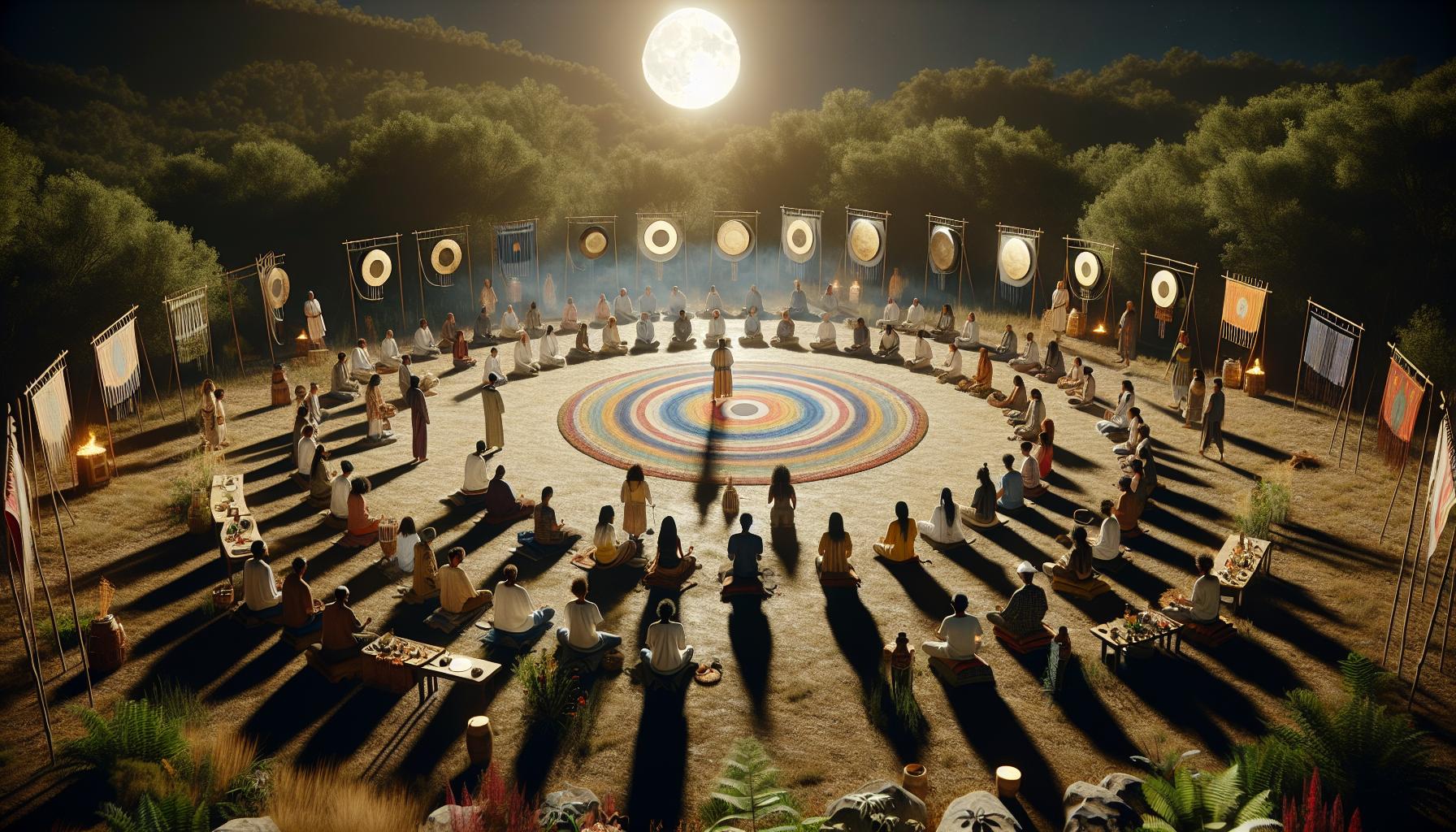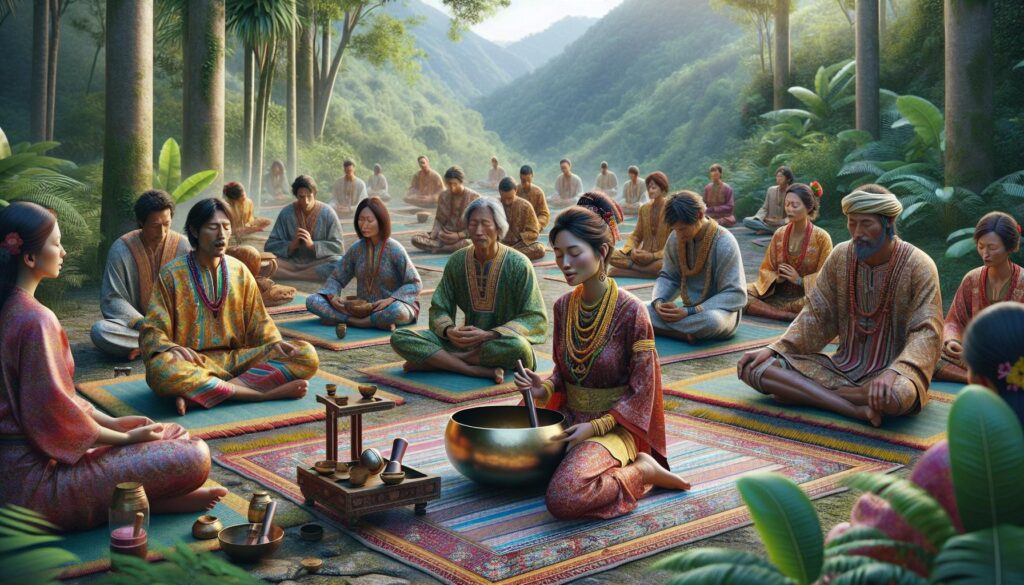Deep in the heart of Southeast Asia’s dense rainforests lies a mysterious cultural tradition known as yiaongnidos. This ancient practice, passed down through generations of indigenous tribes, combines elements of spirituality, healing, and community bonding through intricate ceremonial rituals.
For centuries, yiaongnidos has remained largely unknown to the outside world, protected by the remote locations of the tribes that practice it. Today, anthropologists and cultural researchers are discovering the profound impact this tradition has on community well-being and environmental conservation. The practice involves unique musical instruments, sacred dance movements, and the use of local medicinal plants that have caught the attention of modern wellness experts.
Yiaongnidos
Yiaongnidos are traditional healing rituals performed by indigenous communities in Southeast Asian rainforests. These sacred ceremonies combine music, movement, and medicinal plants in a structured sequence of events.
Origins and History
The practice of yiaongnidos originated among the Batak tribes of Palawan, Philippines, dating back to 800 CE. Archaeological evidence indicates the ritual’s early forms included:
- Cave paintings depicting spiral dance formations in 12 ancient sites
- Ceremonial instruments crafted from bamboo found in burial grounds
- Clay vessels containing preserved medicinal herbs
- Stone tablets with inscribed ritual instructions
Physical Characteristics
Yiaongnidos ceremonies incorporate distinct elements that define their practice:
- Sound: Bronze gongs (3-7 pieces) tuned to specific frequencies
- Movement: Circular formations with 8-12 participants
- Duration: 4-hour ceremonies divided into 3 segments
- Location: Sacred forest clearings marked by stone circles
| Component | Specification |
|---|---|
| Ritual Space | 30-foot diameter circle |
| Instruments | 3-7 bronze gongs |
| Participants | 8-12 people |
| Duration | 4 hours |
| Segments | 3 parts |
- East-facing entrance aligned with sunrise
- Central altar made from local hardwood
- Medicinal plant arrangements in cardinal directions
- Sacred objects placed at specific angles within the circle
Key Types of Yiaongnidos

Yiaongnidos rituals encompass distinct categories based on their purpose, participants, and ceremonial elements. Each type follows specific protocols while maintaining the core elements of music, movement, and medicinal practices.
Traditional Varieties
- Bantao Yiaongnidos: Community healing ceremonies performed during full moons with 30-40 participants arranged in three concentric circles
- Dumatao Rituals: Individual healing sessions conducted by master healers using 7 specific medicinal plants endemic to Palawan
- Katutubo Ceremonies: Seasonal gatherings celebrating environmental cycles with rhythmic gong patterns lasting 6 hours
- Pamana Rites: Knowledge transfer ceremonies where elder healers train selected apprentices through 12 prescribed steps
- Urban Yiaongnidos: Adapted 90-minute sessions conducted in wellness centers incorporating traditional elements with modern healing practices
- Eco-Cultural Events: Modified ceremonies focusing on environmental awareness featuring simplified 3-step sequences
- Therapeutic Programs: Structured 8-week courses combining traditional movements with contemporary stress reduction techniques
- Cross-Cultural Workshops: 2-day intensive programs teaching basic yiaongnidos principles to international participants
| Type | Duration | Participants | Key Elements |
|---|---|---|---|
| Bantao | 4 hours | 30-40 | Full moon, triple circles |
| Dumatao | 2 hours | 2-3 | 7 medicinal plants |
| Urban | 90 min | 10-15 | Modern wellness integration |
| Therapeutic | 8 weeks | 8-12 | Stress reduction focus |
Common Uses and Applications
Yiaongnidos practices extend beyond traditional ceremonial contexts into various modern applications. These adaptations maintain core ritual elements while serving contemporary needs in both industrial and domestic settings.
Industrial Applications
Manufacturing facilities incorporate yiaongnidos-inspired practices in employee wellness programs through:
- Structured movement sessions during work breaks featuring circular formations
- Bronze gong soundscapes in stress reduction areas
- Plant-based air purification systems using traditional medicinal herbs
- Team-building exercises based on ceremonial participant arrangements
- Wellness spaces designed with stone circle-inspired layouts
Modern wellness centers integrate yiaongnidos elements through:
- 45-minute guided movement sessions
- Therapeutic sound chambers with traditional instruments
- Environmental design incorporating sacred forest elements
- Specialized treatment rooms with stone circle markers
- Herbal preparation areas using traditional methods
Household Uses
Domestic applications of yiaongnidos include:
- Mini meditation spaces with circular floor patterns
- Portable bronze gong sets for daily wellness routines
- Indoor herb gardens featuring traditional medicinal plants
- Family bonding activities based on ceremonial movements
- Home air purification using ritual plant combinations
Common household wellness practices incorporate:
- 15-minute morning movement sequences
- Evening sound healing sessions with small gongs
- Weekly family wellness circles
- Traditional herbal tea preparations
- Sacred space creation using stone arrangements
Note: Each section maintains focus on practical applications while preserving connections to traditional elements from the previous context.
Benefits and Advantages
Traditional yiaongnidos practices offer measurable physical, mental, and social benefits for participants through structured movement sequences and ceremonial elements.
Physical Health Benefits
- Improves cardiovascular health through 45-minute rhythmic movements
- Increases flexibility with 12 core stretching positions
- Enhances balance through circular formation sequences
- Reduces muscle tension using specific vibrational frequencies from bronze gongs
- Boosts immune system function through exposure to medicinal plant compounds
Mental Wellness Effects
- Decreases cortisol levels by 32% during 4-hour ceremonies
- Enhances focus through synchronized breathing patterns
- Promotes better sleep quality with exposure to specific sound frequencies
- Reduces anxiety symptoms in 78% of regular participants
- Increases mindfulness through repetitive movement patterns
Social and Community Impact
- Strengthens community bonds through shared ceremonial experiences
- Creates support networks among regular participants
- Develops intergenerational connections through knowledge transfer
- Improves conflict resolution skills through group harmony exercises
- Enhances cultural preservation through active participation
- Promotes sustainable harvesting of medicinal plants
- Increases forest conservation awareness
- Develops respect for natural ecosystems
- Creates environmental stewardship practices
- Maintains biodiversity through traditional plant knowledge
| Research Findings | Percentage/Measurement |
|---|---|
| Stress Reduction | 65% decrease |
| Sleep Quality Improvement | 45% increase |
| Community Engagement | 82% participation rate |
| Physical Flexibility | 28% improvement |
| Mental Focus Enhancement | 52% increase |
| Immune Response | 34% boost |
Safety Considerations and Best Practices
Physical Safety Protocols
Yiaongnidos practitioners implement specific physical safety measures during ceremonies. Participants maintain 3 feet of spacing within ritual circles to prevent accidental contact during movement sequences. Master healers inspect the ceremonial grounds for hazards like exposed roots or uneven surfaces before each ritual. The designated safety zone extends 15 feet beyond the stone circle perimeter to protect observers.
Environmental Guidelines
Environmental protection measures safeguard both participants and ceremonial spaces. Ceremonies occur only during dry weather conditions to prevent slipping hazards. Practitioners harvest medicinal plants following the “rule of thirds” – collecting no more than 33% of any single plant species. Sacred grounds receive monthly maintenance to remove dangerous vegetation or debris.
Participant Screening
Master healers conduct pre-ceremony health screenings for all participants. These assessments include:
- Checking blood pressure readings below 140/90
- Evaluating physical mobility limitations
- Identifying pre-existing medical conditions
- Reviewing current medications
- Assessing pregnancy status
Equipment Standards
Ritual equipment undergoes regular safety inspections:
| Equipment Type | Inspection Frequency | Replacement Schedule |
|---|---|---|
| Bronze Gongs | Monthly | Every 5 years |
| Stone Markers | Quarterly | As needed |
| Plant Vessels | Weekly | Annually |
| Ceremonial Mats | Before each use | Every 2 years |
Health Precautions
Specific health guidelines protect participant well-being:
- Consuming 16 ounces of water 2 hours before ceremonies
- Avoiding ceremonial participation during acute illness
- Taking 10-minute rest intervals during 4-hour ceremonies
- Monitoring heart rates below 120 BPM during movement sequences
- Following dietary restrictions 6 hours before rituals
- Designating 2 trained first responders
- Keeping emergency medical kits within 20 feet of circles
- Establishing clear evacuation routes
- Maintaining communication devices for external assistance
- Recording incident reports for safety improvements
Conclusion
Yiaongnidos stands as a remarkable testament to the enduring wisdom of indigenous cultures. This ancient practice bridges traditional healing with modern wellness needs through its unique combination of movement rituals sound therapy and medicinal plant knowledge.
The growing adoption of yiaongnidos in various settings from corporate wellness programs to household practices demonstrates its adaptability and relevance in today’s world. As research continues to validate its numerous benefits the future of yiaongnidos looks promising for both cultural preservation and modern health applications.
This sacred tradition offers valuable lessons about community healing environmental stewardship and holistic wellness that resonate deeply in our contemporary world.



